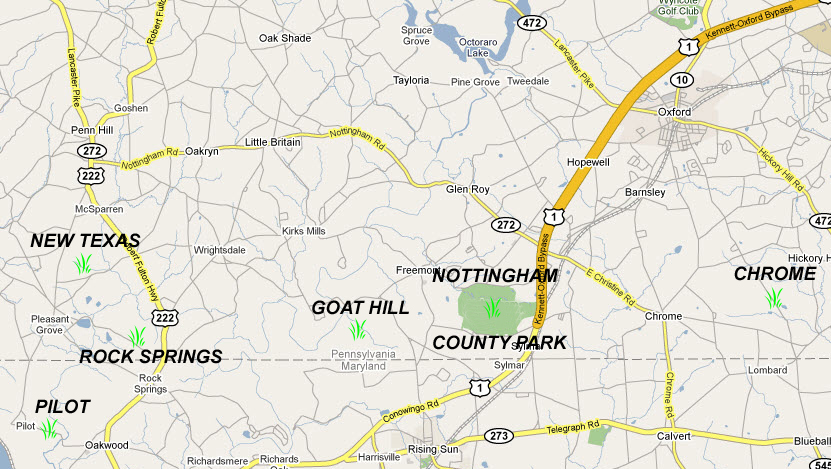About The State Line Serpentine BarrensLocated along a 20-mile stretch of the Maryland-Pennsylvania border, the State Line Serpentine Barrens, the largest occurrence of Serpentine Barrens in the eastern United States, contains some of the last major remnants of serpentine grassland and savanna in eastern North America. The Barrens used to be known as the State Line Mining district due to the Chromium mining that took place at various sites, mainly in the 19th century. The sun-baked conditions on bare serpentine rock and gravel create desert-like habitat for rare and unusual plant species that are specially adapted to withstand heat and drought. However, while lacking nutrients, this habitat supports numerous species—many rare or endangered—that have adapted to the harsh environment over thousands of years. Rare plants found on the barrens include: serpentine aster, long-haired barrens chickweed, glade spurge, fameflower, lyre-leaved rock cress, prairie dropseed, arrow-feather. Moths and butterflies, including red-banded hairstreak, cobsew skipper, barrens buckmoth, mottled duskywing and dusted skipper. The barrens also are home to other rare species such as the rough green snake and various insects, some only found on the barrens. The various entities involved in managing and preserving the State Line Serpentine Barrens are The Nature Conservancy (TNC), The Bureau of Forestry (part of the Pennsylvania Department of Conservation and Natural Resources (DCNR)), Chester County Department of Parks and Recreation, Lancaster County Conservancy, and private land owners. The special mission of the Friends is to work with all parties to assist through volunteer activities to preserve and maintain these Barrens habitats, create hiking trails, archive and preserve the historical documents and maps related to the preservation projects, and educate the public on both preservation and Barrens habitats. The six major sites are listed here and shown on the map. 
Chrome Barrens The Chrome Barrens in Chester County are approximately 200 acres in size and are owned by Elk Township and The Nature Conservancy. They are open to the public. The Elk Township tract is managed by The Nature Conservancy. Nottingham County Park Recently designated a National Natural Landmark, this Park has been managed by the Chester County Department of Parks and Recreation since 1963 and is open to the public. With an area of 650 acres, the Serpentine Barrens can be seen from eight miles of horseback riding and hiking trails. The Nature Conservancy owns an additional area adjacent to the Park. Goat Hill Public Wild Plant Sanctuary This site in Chester County is owned by the Pennsylvania Department of Conservation & Natural Resources (DCNR), The Nature Conservancy, and private owners. The Bureau of Forestry Goat Hill Serpentine Barrens Public Wild Plant Sanctuary is a 602-acre tract. Pilot Preserve Located in Northern Cecil County, Maryland, this 32 acre preserve is only open to scientific research with prior permission from The Nature Conservancy. An additional 60 acres, privately owned, is under management in conjunction with the Conservancy. Rock Springs Preserve This 170 acre tract of Serpentine Barrens is primarily owned and managed by the Lancaster County Conservancy (LCC). A small portion is privately owned. Rock Springs is open to the public. New Texas Barrens The New Texas Barrens in Lancaster County is approximately 200 acres in extent, privately owned, and not open to the public. |